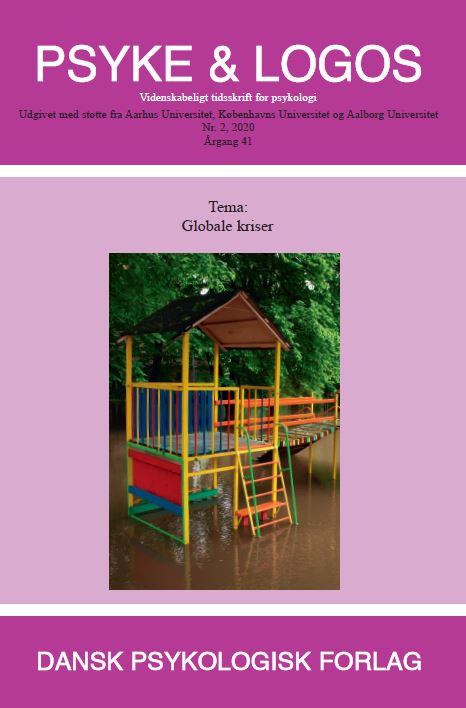How war affects the relationship: the consequences of veterans’ post-deployment reactions for intimacy and communication in military couples
DOI:
https://doi.org/10.7146/pl.v41i2.127515Keywords:
PTSD, Relationships, Family life, stressreactionsAbstract
Consequences of deployment to an armed conflict may challenge veterans, as well as their partner and families, both directly and indirectly. The transition from deployment to the routines and intimate romantic relations of everyday life can be difficult for the military couple, especially in the presence of PTSD-symptoms. Research combining influences of these two phenomena (the post-deployment transition and the experience of PTSD-symptoms) on military couples’ romantic relationship has been scarce. First, we investigate how military couples may experience specific challenges in the post-deployment transition compared to normal couple transitions. We draw on empirical material on Danish veterans’ post-deployment phase to expand a general model for couple transitions. Second, we discuss how PTSD-symptoms can complicate the longer-term adjustment and relational interactions of military couples. We particularly focus on how veterans’ cognitive and emotional disturbances can undermine and stress intimacy processes and communication between partners. Finally, we argue that PTSDsymptoms and dysfunctional dyadic interactions may develop into mutually sustaining negative patterns over time. On this ground, we recommend a heightened awareness of normal dyadic challenges in the face of transitions, as well as of the consequences of PTSD-symptoms on sustaining negative dyadic processes by professionals working with the support or treatment of military couples after deployment.
Downloads
Published
How to Cite
Issue
Section
License
Ophavsret er tidsskriftets og forfatternes. Det er gældende praksis, at artikler publiceret i Psyke & Logos, som efterfølgende oversættes til andet sprog, af forfatteren frit kan publiceres i internationale tidsskrifter, dog således at det ved reference fremgår, at den oversatte artikel har et forlæg i en dansksproget version i Psyke & Logos. Artikler kan frit deles og linkes til på forsknings- og undervisningsnetværk (så som Blackboard). Link foretrækkes, fordi det giver oplysning om brug af tidsskriftets artikler.




